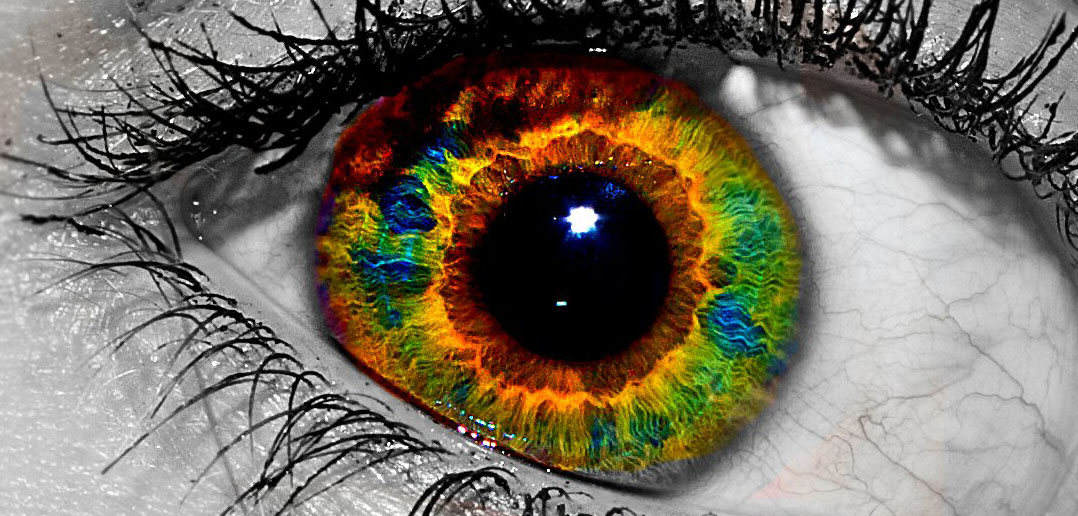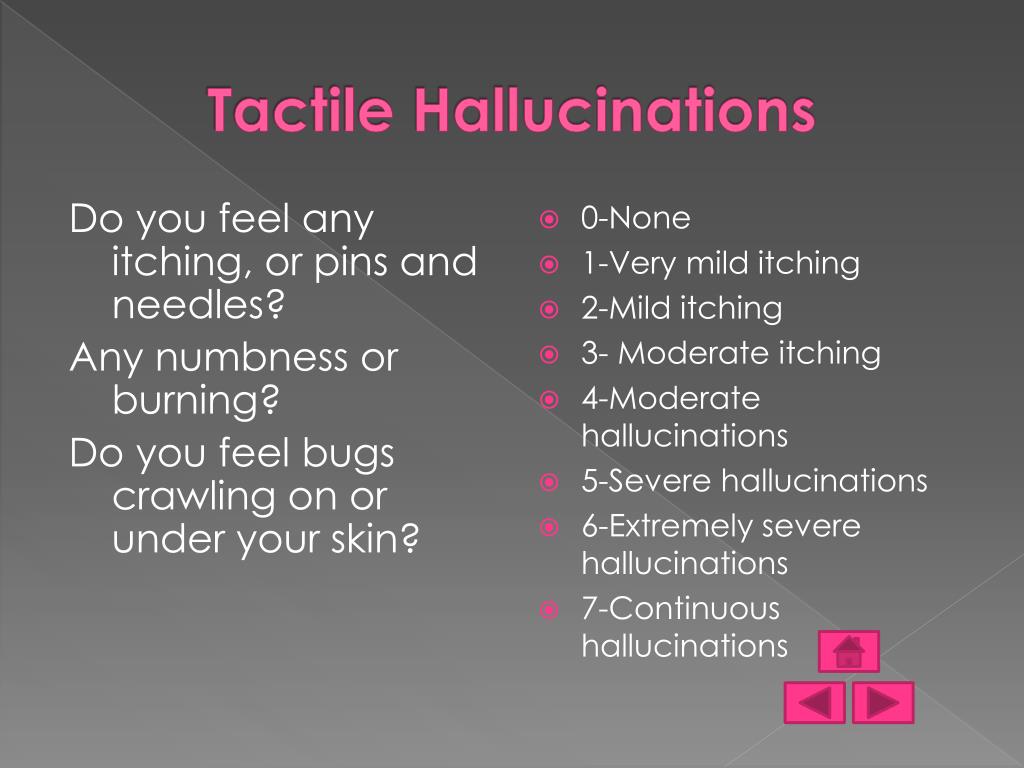

He persevered until he reached the dose of 50 mg twice daily however, he could no longer tolerate the sensations.
#TACTILE HALLUCINATION SKIN#
The same sensation of insects crawling over his skin reappeared on the day of recommencement. He was recommenced on 25 mg once daily on alternate days initially with the plan to titrate the dose gradually.

The decision was made in agreement with Mr A to rechallenge lamotrigine as monotherapy, as he had the best therapeutic response from lamotrigine. Unfortunately, an emerging depressive episode was noted after the cessation of lamotrigine. While the reduced dose brought no relief to Mr A, his symptoms resolved fully approximately 2 days after cessation of lamotrigine.

However, his tactile hallucination caused significant distress to him and mandated reduction in the dose of lamotrigine to 50 mg twice daily. His mental state remained stable otherwise, with no other psychotic or affective features. He displayed no rash or systemic symptoms that may be associated with Stevens-Johnson syndrome or toxic epidermal necrolysis. After Mr A confirmed the absence of insects over the affected area, the sensation often moved to a different location. The distribution of the sensations was widespread and changeable each time, sometimes affecting multiple sites simultaneously. Mr A’s mental state improved significantly on this combination.įour weeks after reaching the target dose of 100 mg twice daily of lamotrigine, Mr A developed sensations of "tiny insects crawling over the skin." Although he never saw the insects, he was fairly convinced about their presence and constantly checked his skin. He continued taking valproate at the dose of 500 mg once daily. Lamotrigine was slowly titrated to 100 mg twice daily while escitalopram was discontinued.
#TACTILE HALLUCINATION TRIAL#
Mr A continued to have depressive symptoms while taking this combination, and a trial of lamotrigine was therefore considered after his referral to psychiatric services. He was initiated on a combination of sodium valproate 400 mg twice daily and escitalopram 20 mg daily after experiencing a hypomanic switch from citalopram.

Given the predominance of depressive symptoms in his illness, Mr A was initially treated by his general practitioner with multiple antidepressants, including sertraline, paroxetine, and citalopram. He had never experienced psychotic symptoms, in any context, including tactile hallucinations. He has had at least 1 episode of depression per year for the last 20 years, which were often preceded by hypomanic episodes. Mr A is a 44-year-old white man with a 20-year history of DSM-IV bipolar II disorder with predominantly depressive episodes. We present a case of tactile hallucination associated with lamotrigine in a patient with bipolar II disorder.Ĭase report. They also describe infrequent psychiatric manifestations such as irritability, delusions, and auditory and visual hallucinations associated with lamotrigine. 1 Villari et al 2 report rare but serious cutaneous side effects of lamotrigine, including Stevens-Johnson syndrome and toxic epidermal necrolysis. To the Editor: Lamotrigine is an antiepileptic and mood-stabilizing medication that has a role in treating bipolar depression, as highlighted by Geddes et al. Lamotrigine-Induced Tactile Hallucination


 0 kommentar(er)
0 kommentar(er)
